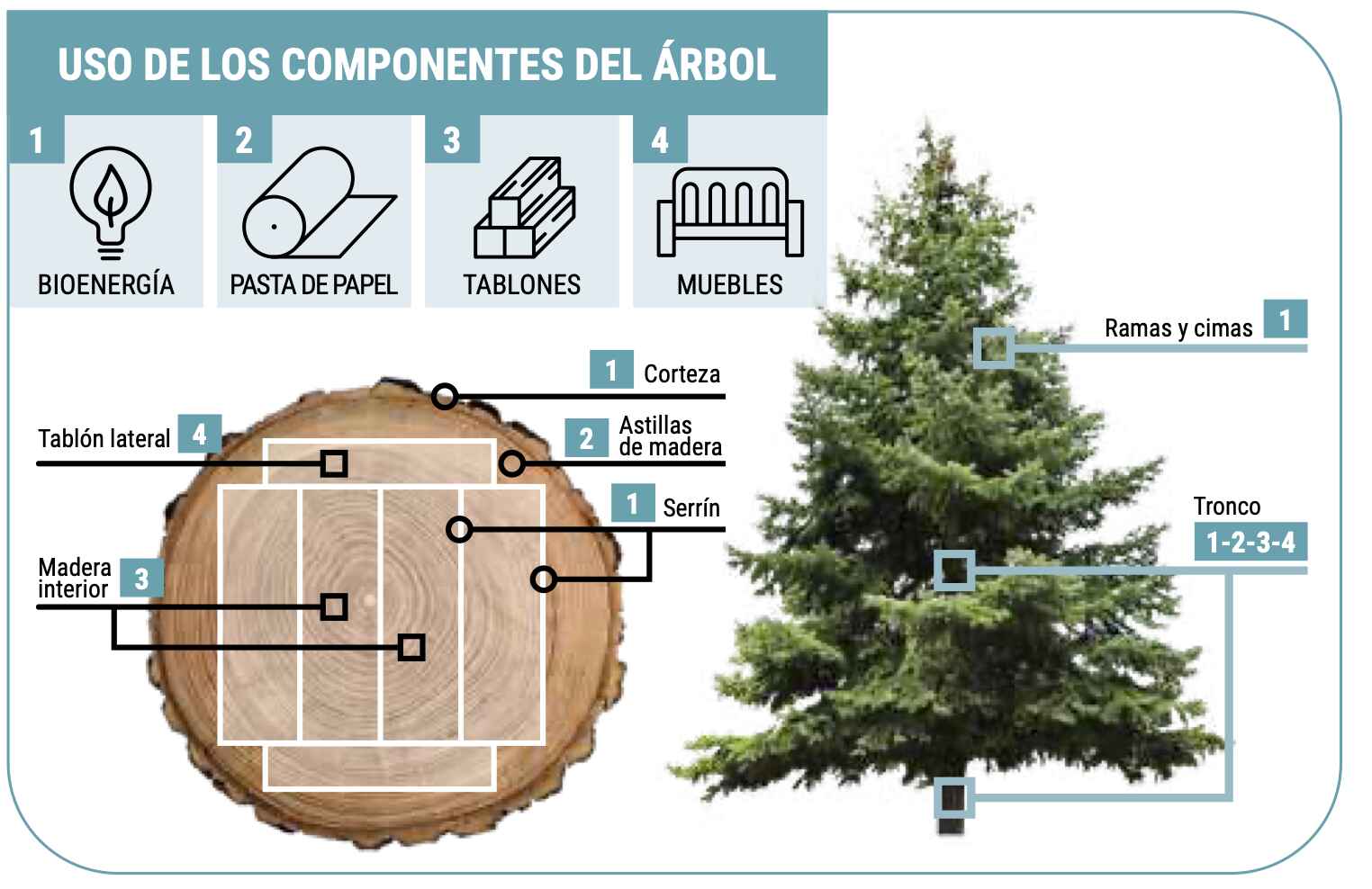Trees are an invaluable source of resources, and in the paper industry, their utilization is maximized without generating waste. Every part of the tree serves a specific purpose, contributing to the sector’s sustainability and efficient use of forest resources.
Use of Tree Components
- Trunk: The most valuable part, primarily used for sawn wood in furniture and construction, as well as for producing paper pulp.
- Branches and Tops: These parts are not wasted; they are used for generating bioenergy, a renewable and sustainable energy source.
- Bark, Wood Chips, and Sawdust: These are utilized in various industrial processes, such as manufacturing particle boards and generating biomass energy.
Sustainable and Renewable Management of Paper Forests
Paper production comes from fast-growing species like pine and eucalyptus, specifically cultivated in renewable forest plantations. These plantations are continuously regenerated, ensuring a sustainable production cycle.
Contrary to common misconceptions, paper production does not use wood from exotic tropical species, nor from trees like oaks, beeches, or holm oaks. Paper forests are established on land that was previously barren, covering only 3% of Spain’s forest area but significantly contributing to the country’s forest growth.
Paper as a Sustainable Product
The responsible use of wood in the paper industry is a prime example of a circular economy and efficient resource utilization. Continuous reforestation and sustainable forest management not only ensure a steady supply of raw materials but also help combat desertification and improve air quality by capturing CO2.
Paper plantations provide a renewable raw material while playing a crucial role in ecological balance and the conservation of natural forests. Thus, paper is not only an essential product for society but also an environmental ally when sourced sustainably.
 info@labolsadepapel.com
info@labolsadepapel.com






